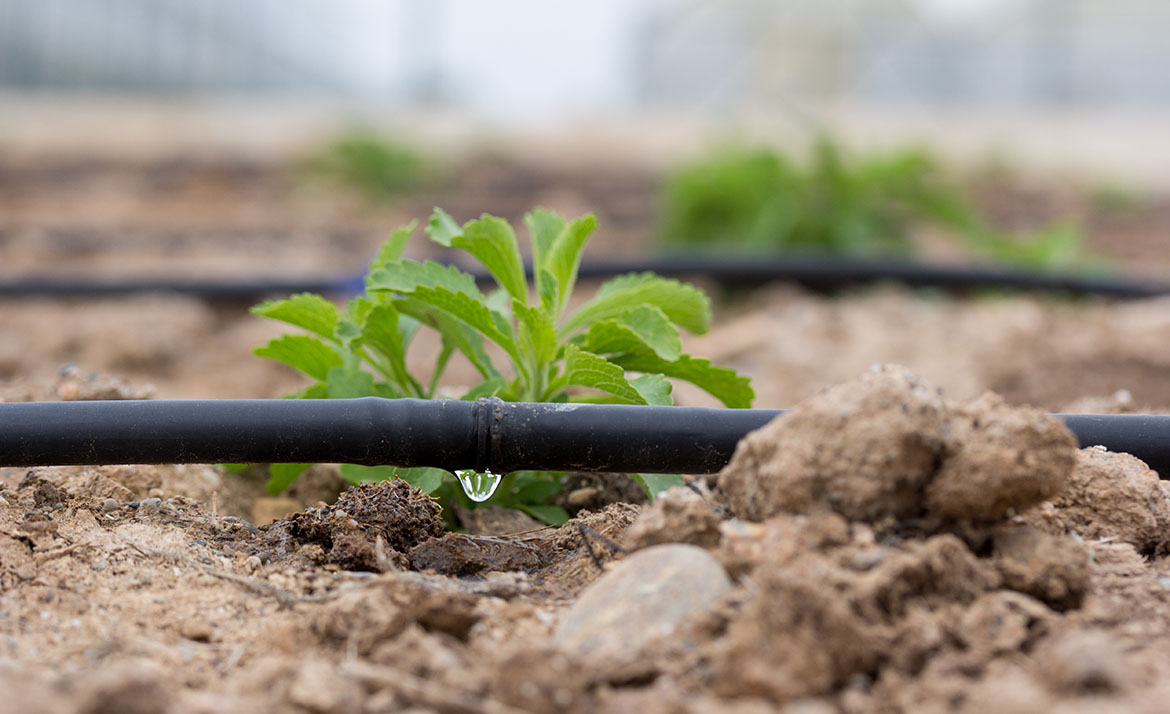(Part two of the “Don’t Forget It” Irrigation Series)
Precipitation rates, plant water requirements and soil types are extremely important, but commonly forgotten factors that apply to irrigation systems. Over the next couple months Jeffrey Knight, Ewing’s Director of Education Services, will explain the importance of applying each of these components to the construction of an irrigation system.
Picture this: You finish building a rock-solid irrigation system for a client. When you leave, everything is operating in tip-top shape. Two weeks later your client calls claiming her plants are dying. How can this be? If this situation sounds familiar, it’s possible your irrigation design is lacking a very important component—plant-water requirement.
Check out these three steps on adding this crucial component to future irrigation systems to keep plants healthy and your client happy.
Step 1: Understanding plant-water requirement
Knight defines plant-water requirement as, “the amount of water that needs to be replaced after it has been lost due to evaporation and transpiration.” 
There are many outside factors that determine how much water your irrigation system must apply for the correct amount of water to reach a plant.
In order to determine how much water an irrigation system needs to produce, you have to understand the factors that impact plant-water requirement.
Step 2: Factors that impact plant-water requirement
The main factors that impact plant-water requirement are evaporation, transpiration, plant-type, microclimates and plant density. Each are defined by Knight below.
- A: Evaporation is the process of turning water into vapor. Temperature, humidity, wind speed and solar radiation effect evaporation. The longer the water droplets are subjected to these elements, the more evaporation the irrigation system will experience.
- B: Transpiration is the process of plant material giving off water vapor from the leaves. The combined effect of evaporation and transpiration, also known as evapotranspiration (ET), is the total amount of water that needs to be replaced from these two factors alone.
- C: Plant type refers to knowing what kinds of plants will do well in a specific climate. Different plants are created to survive in specific climates.
- D: Microclimates are made up of environmental conditions such as full sun and full shade and contribute to how much water is needed by a plant.
- E: Plant density refers to how many plants populate a landscape. Sparsely planted landscapes have less leaf structure than mature, densely planted landscapes, resulting in less water loss.
Step 3: Determining plant-water requirement
After you’ve taken the above factors into account, the looming question remains, “How do I determine the plant-water requirement of the landscape I’m working with?” 
Factors C-E in step two will require you to do some research specific to the landscape you’re working with. Factors A-B can be determined by consulting a local weather station.
“These stations will calculate the ET rate of a reference crop for landscaping,” Knight said. “Once you have that information, you will use a value called a crop coefficient to calculate the evapotranspiration rate for your specific plant.”
The formula looks like: Evapotranspiration x Crop Coefficient = Plant-Water Requirement.
Below, Knight gives an example of how to determine plant-water requirements using this formula.
Example: If you discover the reference ET rate is 1.2 inches for the week and have a warm season grass with a crop coefficient of 0.6, the plant-water requirement for that grass is: 1.2 x 0.6 = 0.72 inches for the week. (The final amount will be further impacted by factors C-E.)
The reference ET rates and crop coefficients can be found on university websites and at your local Ag extension. Here are two examples from Arizona and Texas.
We want to hear about your experiences factoring plant-water requirements into an irrigation system! Tell us about them in the comments below.
Interested in learning more about this subject? Visit our education website to look for classes coming to your area.




